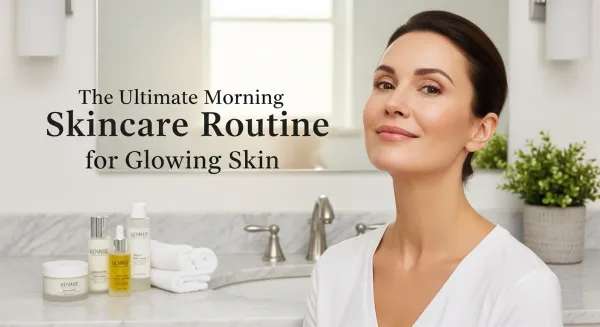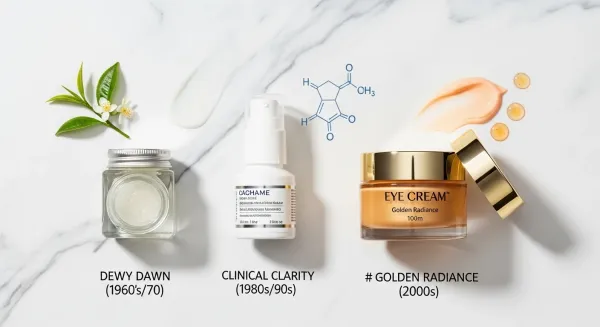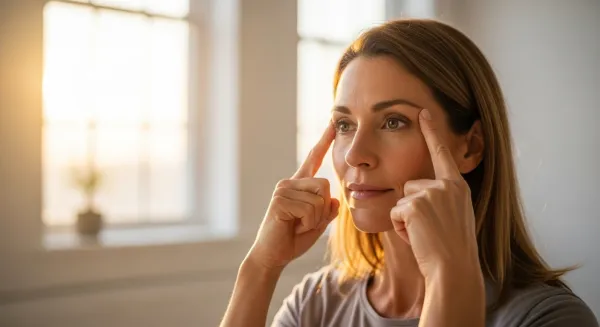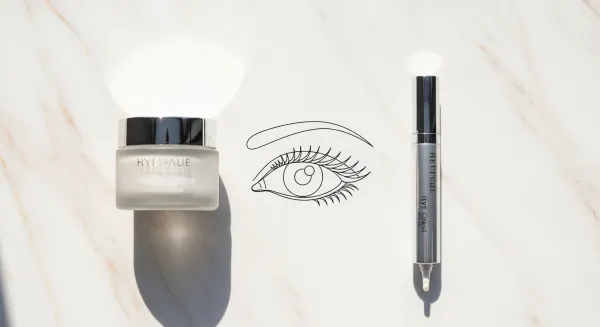7 Essential Steps to Permanently Banish Dark Circles & Reclaim Bright Eyes
Banish dark circles & reclaim bright eyes! Discover 7 essential steps to eliminate under-eye shadows. Learn causes, effective skincare, and expert treatments for lasting results.
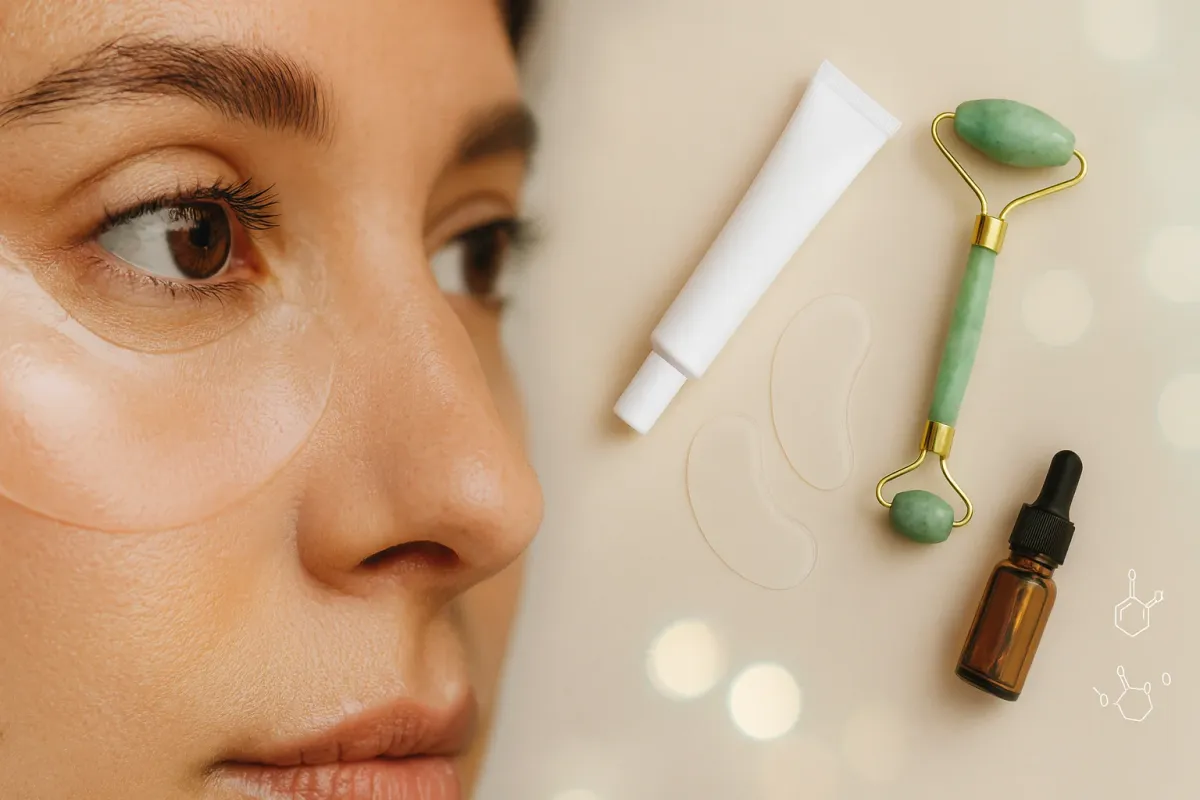
Tired of looking tired? Those dark shadows under your eyes, also known as dark circles, can make you seem older and worn out.
You want bright, clear eye area skin, and you can get it. This guide gives you direct steps to understand and eliminate dark under-eye circles.
Bright Eyes — Banish Dark Circles (Quick Guide)
Quick Wins
Seven Essential Steps
- SPF daily: Broad‑spectrum SPF 30+ around the eyes (AM) — prevents pigment worsening.
- Gentle cleanse: Fragrance‑free, non‑stripping; avoid harsh rubbing of the eye area.
- Targeted serum: Use an eye serum with vitamin C or niacinamide (AM) for brightness.
- Night repair: Retinal/retinol eye cream (low strength) 2–4×/week (PM).
- Vasoconstrict & de‑puff: Cool compress or chilled eye gel for 5–10 min when puffy.
- Conceal smart: Peach/salmon corrector under concealer to neutralize purple/blue tones.
- Consistency: Track 8–12 weeks — under‑eye skin turns over slowly.
Note: Patch‑test new actives; the peri‑orbital skin is thin and reactive.
Unmasking the Culprits: Why Dark Circles Appear
You look in the mirror. What do you see? Often, it's those tell-tale dark circles. But why do they happen? The skin around your eyes is special. It's thin and delicate. This makes it prone to showing signs of fatigue, aging, and other factors. Understanding the cause is the first step to reduce dark circles.
Think of your skin like a curtain. Under your eyes, that curtain is very sheer. What's behind it becomes visible. Sometimes, it's just shadows. Other times, it's more complex. We're going to break down the main reasons. This will help you target the right solution. No more guessing.
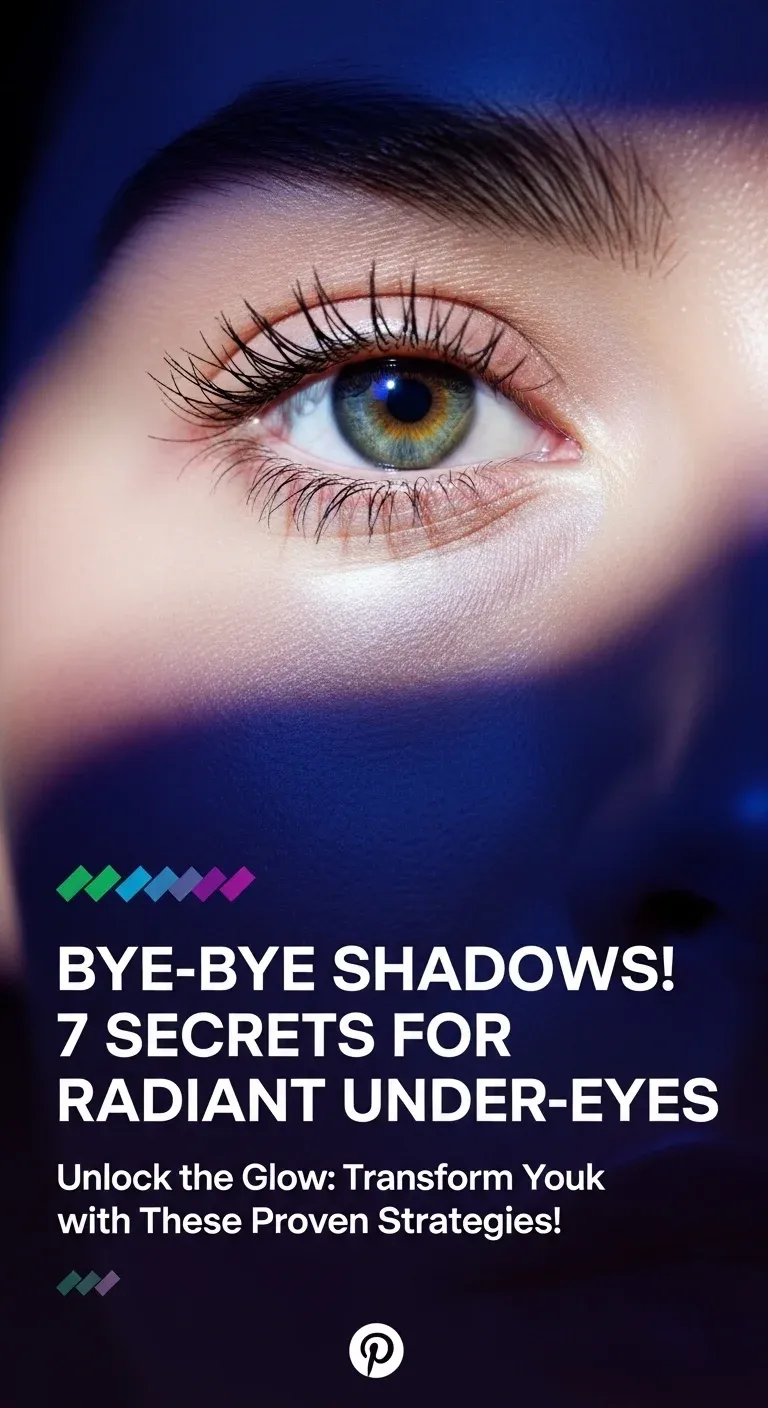
Genetic Predisposition to Dark Circles
Do your parents have dark circles? If so, you might, too. Genetics play a big role in periorbital hyperpigmentation. This just means darker skin around your eyes. It's often inherited. Your skin might naturally produce more melanin in that area. Or, your blood vessels could be closer to the surface.
This isn't something you can change. But you can manage it. Knowing it's genetic helps you set realistic expectations. It means you'll focus more on maintenance than "curing" them completely. Don't worry, many solutions still work.
Thin Skin & Visible Blood Vessels
As mentioned, the skin under your eyes is very thin. It's about ten times thinner than the rest of your face. This means blood vessels just below the surface can show through easily. They cast a bluish or purplish tint. This creates the look of dark shadows under eyes.
This is more noticeable if your skin is pale. When you're tired, these vessels can dilate, making the circles even darker. It's not always about pigment. Sometimes, it's just what's underneath. Improving skin thickness and blood flow can help.
Lack of Sleep & Chronic Fatigue
This is the most common reason people assume they have dark circles. And they're often right. Not getting enough sleep leads to dull, pale skin. This makes existing dark areas more obvious. Fatigue also causes fluid to build up under your eyes. This results in puffy eyes and under-eye bags.
The shadow cast by puffy eyelids makes the area look even darker. Quality sleep is a powerful tool. It helps your body repair itself. It also helps your skin look brighter. Think of it as your body's natural reset button.
Dehydration, Diet & Lifestyle Factors
Are you drinking enough water? Dehydration makes your skin look dull. It also causes your eyes to sink, creating shadows. What you eat also matters.
A diet high in salt can lead to fluid retention and puffy eyes. Too much sugar can harm your skin's collagen. This makes your skin thinner over time. Sugar sabotages your skin's health.
Smoking and too much alcohol also take a toll. They dry out your skin. They can also damage blood vessels. These choices can worsen dark circles. Small changes in your daily habits can make a big difference.
Allergies & Nasal Congestion
Do you suffer from allergies? Hay fever or other allergies can cause puffy eyes. They also make you rub your eye area. This rubbing can irritate the skin. It also causes tiny blood vessels to break. This leads to increased pigment.
Nasal congestion can also dilate the veins under your eyes. This makes them appear darker. Treating your allergies can significantly reduce dark circles. Talk to your doctor if you suspect allergies are the cause.
Sun Exposure & Hyperpigmentation
Too much sun is bad for your skin. It triggers your body to produce more melanin. This is the pigment that gives skin its color. In the delicate eye area, this can lead to hyperpigmentation. This means darker patches of skin.
Sun exposure also breaks down collagen. This makes your skin thinner. Thinner skin shows blood vessels more easily. Always protect your skin from the sun. This is a crucial step to prevent and get rid of dark circles.
Aging & Collagen Loss in the Under-Eye Area
As you get older, your skin changes. You naturally lose collagen and fat. This makes the skin under your eyes even thinner. It also makes the blood vessels more apparent. The natural hollowing of the tear trough can also create shadows. This makes dark circles worse.
This is a normal part of aging. But you can slow it down. Skincare and certain treatments can help. They keep your skin looking plump and firm. Learn more about collagen-boosting skincare.
The 7 Essential Steps to Banishing Dark Circles
You know the causes. Now, let's talk solutions. This section gives you 7 clear, actionable steps. These steps will help you get rid of dark circles. They cover everything from daily habits to advanced treatments. Start today to see a brighter change.
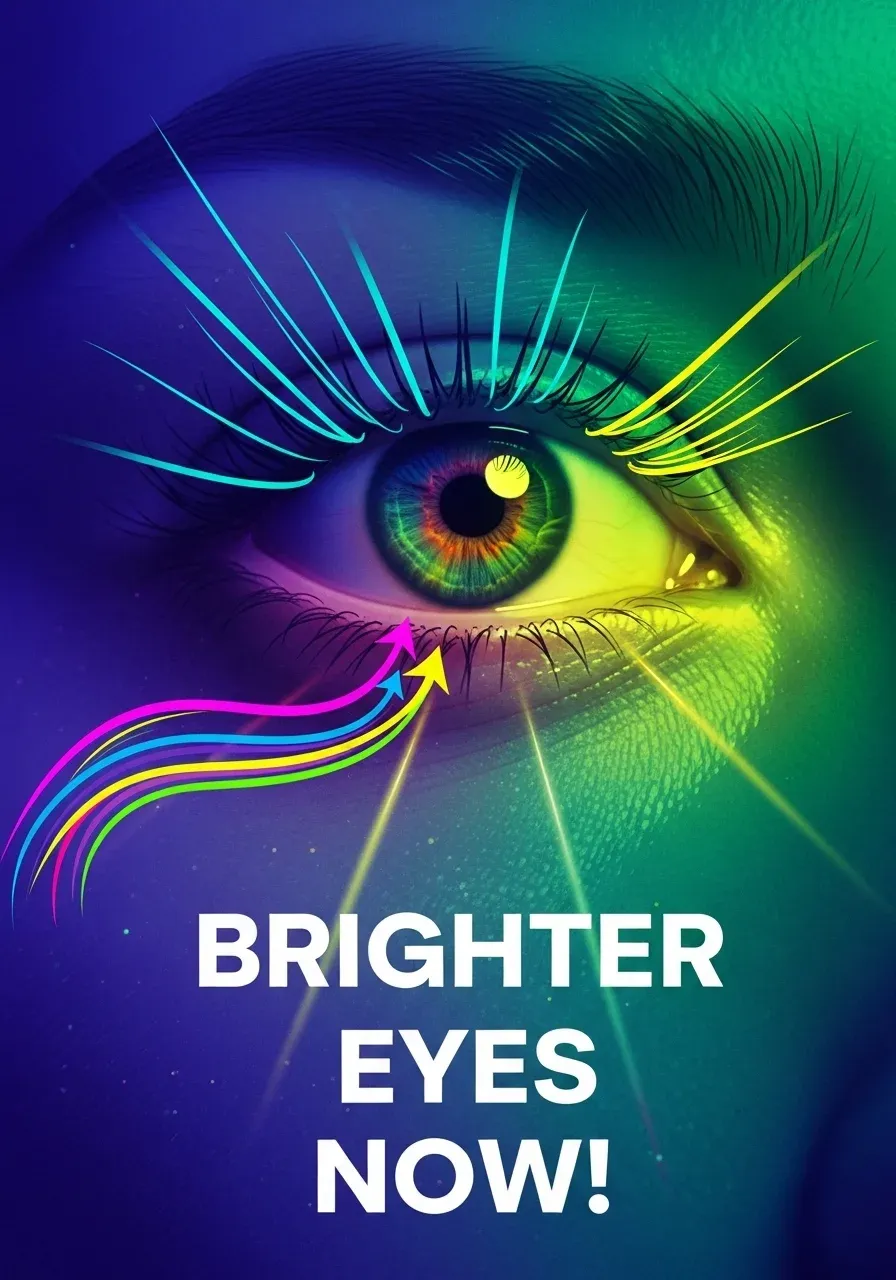
Step 1: Optimize Your Sleep Habits for Brighter Eyes
This is foundational. You need quality sleep. Aim for 7-9 hours every night. Go to bed and wake up at the same time. Even on weekends. This sets your body's internal clock. It reduces fatigue that leads to tired eyes.
Try sleeping on your back. Use an extra pillow to elevate your head. This helps prevent fluid from pooling under your eyes. Less fluid means less puffy eyes. It's a simple change with big results. Good sleep is your body's repair time.
Step 2: Hydrate Adequately and Refine Your Diet
Drink plenty of water. At least eight glasses a day. This keeps your skin hydrated and plump. It makes blood vessels less visible.
See how water intake transforms your skin. Limit salt and sugar. They cause puffiness and damage collagen.
Eat antioxidant-rich foods. Berries, leafy greens, and green tea are great. These foods fight damage and support healthy skin.
Discover essential antioxidant-rich foods. A healthy diet boosts your overall skin health, reducing the look of dark circles.
Step 3: Choose the Right Under-Eye Skincare Ingredients
The right products make a huge difference. Look for specific ingredients. They target different causes of dark circles.
- Hyaluronic Acid: This ingredient attracts and holds water. It plumps up thin skin. This makes blood vessels less noticeable. It's great for hydration. Learn about hyaluronic acid for hydration.
- Retinol: A vitamin A derivative. It boosts collagen production. This thickens the skin over time. It can also help with hyperpigmentation. Start with a low strength. Use it at night. Understand the power of retinol for anti-aging.
- Vitamin C: A powerful antioxidant. It brightens skin and reduces pigment. It also helps build collagen. Use a serum daily. Explore the power of Vitamin C for anti-aging.
- Caffeine: Reduces puffiness by constricting blood vessels. It's a temporary fix. You'll often find it in eye creams.
- Kojic Acid: Good for hyperpigmentation. It blocks melanin production. Use it carefully under the eyes.
Choosing the best cream for dark circles depends on the cause. Do you have thin skin? Try Hyaluronic Acid and Retinol. Is it pigmentation? Vitamin C or Kojic Acid might be better. Find your ultimate anti-aging eye cream.
Step 4: Protect Your Delicate Skin from Sun Damage
Sun protection is not optional. It's mandatory. UV rays worsen hyperpigmentation and break down collagen. This makes dark circles more visible. Always wear sunscreen, even on cloudy days.
Use an SPF of 30 or higher. Look for mineral sunscreens with zinc oxide or titanium dioxide. These are gentler on the eye area. Wear sunglasses.
Choose large, UV-blocking lenses. A wide-brimmed hat helps too. Even SPF in makeup might not be enough. Does SPF makeup really work?
Step 5: Master Concealing Techniques for Instant Brightness
While you work on long-term solutions, camouflage helps. A good concealer can instantly brighten your eye area.
- Color Correct: Use a peach or orange corrector for bluish/purplish dark circles.
- Match Skin Tone: Apply a concealer that matches your skin tone.
- Less is More: Use a small amount. Blend gently with your finger or a brush.
- Set: A light dusting of translucent powder keeps it in place.
This provides immediate relief. It helps you feel more confident while your treatments take effect.
Step 6: Explore Professional Treatments for Lasting Results
Sometimes, at-home care isn't enough. A dermatologist or plastic surgeon can offer advanced solutions.
| Treatment Type | Best For | How it Works | Typical Cost Range (USD) |
|---|---|---|---|
| Dermal Fillers | Hollowing, volume loss, deep shadows | Fillers (like Hyaluronic Acid) add volume, lifting the skin and reducing shadows. | $600 - $1,500 per syringe |
| Chemical Peels | Hyperpigmentation, uneven skin tone | Uses a chemical solution to remove outer layers of skin, revealing brighter skin. | $150 - $600 per session |
| Lasers | Hyperpigmentation, blood vessels | Targets pigment or blood vessels to lighten dark areas and improve skin texture. | $400 - $1,200 per session |
| Platelet-Rich Plasma (PRP) | Thin skin, overall rejuvenation | Uses your own blood plasma to stimulate collagen and tissue repair. | $500 - $1,500 per session |
These treatments have varying dark circles treatment cost. They require expert advice. A dermatologist can tell you which option is right for your specific needs. (Source: Mayo Clinic)
Step 7: Address Underlying Medical Conditions with a Specialist
If your dark circles are severe or suddenly appear, see a doctor. Conditions like thyroid issues or anemia can cause them. Chronic allergies also play a role. A general practitioner can rule out any health problems. They can also refer you to a specialist.
Don't ignore persistent issues. Your skin often reflects your internal health. This step is about getting to the root cause. This ensures your circles under eyes treatment is effective and safe.
Lifestyle Adjustments for Long-Term Prevention
You want to stop dark circles from coming back, right? This section focuses on long-term habits. These adjustments prevent dark shadows under eyes and keep your eye area bright. Consistency is the secret weapon here. Little things add up to big results over time.
Think of it as setting up a defense system for your skin. You've fought the battle; now win the war. These simple changes are easy to add to your daily life. They provide ongoing support for your delicate under-eye skin.
Reducing Stress and Managing Allergies
Stress dark circles are real. When you're stressed, your body produces cortisol. This hormone can affect blood flow. It makes blood vessels more noticeable. Find ways to relax. Try meditation, deep breathing, or light exercise. Even 15 minutes a day helps.
If allergies cause your puffy eyes and dark circles, manage them. Take antihistamines if needed. Avoid known triggers. Talk to your doctor about allergy tests. Less rubbing and irritation means less dark pigment. This proactive step can greatly reduce dark circles.
Avoiding Eye Rubbing and Gentle Makeup Removal
Rubbing your eye area is a big no-no. It breaks tiny blood vessels. It also irritates the skin. This leads to more hyperpigmentation. Be gentle. When removing makeup, use a soft cleanser. Pat, don't rub.
Use a cotton pad soaked in makeup remover. Hold it over your eye for a few seconds. This lets the makeup dissolve. Then, wipe away gently. This simple act protects your delicate skin and prevents new dark circles.
Consistency is Key: Maintaining Your Routine
You've learned a lot. Now, stick with it. No single trick will eliminate dark under-eye circles overnight. It takes time and effort. Apply your eye cream daily. Get enough sleep. Stay hydrated. Protect your skin from the sun.
Make these steps part of your daily routine. Dark circles before and after photos often show the power of consistency. Don't get discouraged if you don't see instant results. Give your skin time to respond. Small, consistent actions lead to lasting change.
When to Consult a Dermatologist for Dark Circles
You've tried the home remedies. You've bought the best cream for dark circles. Still no change? Or maybe your dark circles suddenly appeared or got much worse. This is when you call in the experts.
A dermatologist or a plastic surgeon specializes in skin health. They can offer insights and treatments you can't get at home.
Don't hesitate to seek professional advice. Sometimes, why do I have dark circles has a deeper answer. A medical professional can diagnose the exact cause. They can suggest treatments specific to your unique situation. This might save you time and money on ineffective products. (Source: Healthline)
They can help if your dark circles are:
- Persistent: They don't go away even with consistent lifestyle changes and good skincare.
- Worsening: They are getting darker or larger over time.
- Accompanied by other symptoms: Such as severe swelling, pain, or changes in vision.
- Caused by underlying medical issues: A doctor can test for anemia, thyroid problems, or other conditions.
A dermatologist can also discuss advanced treatments. These include Lasers, Chemical Peels, or Fillers. They understand the dark circles treatment cost and can guide you. They help you find the safest and most effective path. They aim to help you truly eliminate dark under-eye circles. Your eye area deserves expert care.
From the Field: A Personal Note
After over a decade in this field, one thing became clear to me about dark circles. Most people think it's just about sleep.
My first big mistake was telling clients to "just get more rest." It's rarely that simple. I remember one client, Sarah. She swore she slept 8 hours every night. Yet, her dark shadows under eyes were stubborn. We tried all the creams. Nothing stuck.
Then, during a longer chat, she mentioned her chronic hay fever. Her eyes were always a bit itchy. She'd rub them without thinking. It was a lightbulb moment. Once we got her allergies under control and she stopped rubbing, her hyperpigmentation faded. It wasn't about sleep at all. It was the constant micro-trauma and inflammation.
The surprising insight? It's often the small, overlooked habits that make the biggest difference. The gentle touch, the consistent allergy medicine, the extra glass of water. These seem too simple to matter. But they add up. Don't dismiss the basics. They are powerful.
Conclusion & Next Steps
You now have a clear roadmap to tackle dark circles. Understanding the causes, from genetics dark circles to fatigue, is your first victory. Implement the 7 essential steps. Focus on sleep, hydration, smart skincare, and sun protection.
Remember, consistency is your best friend. Small, daily efforts will lead to noticeable changes in your eye area.
If you've tried everything, don't hesitate. Talk to a dermatologist for expert advice and advanced solutions. Start today. Reclaim your bright, confident eyes.
FAQ — Dark Circles Under Eyes
Clear answers. Quick wins. Brighter eyes.
Common drivers: genetics, thinner skin with age, pigment from sun exposure, allergies, and shadows from hollows or puffiness. Lifestyle hits like poor sleep, smoking, alcohol, and rubbing the eyes make it worse. Sometimes it’s just structure: visible vessels show through thin skin. Protect with daily SPF, manage allergies, and avoid rubbing to limit triggers.
There’s no one-and-done fix for everyone. Start with basics for 8–12 weeks: sleep 7–9 hours, daily SPF 30+, cold compress 5–10 minutes, and an eye product with caffeine, vitamin C, peptides, or retinoid. If pigment dominates, ask about peels or lasers; if volume loss, fillers can help. Set expectations: most people improve, few erase them 100%.
Low iron or B12 can deepen under‑eye darkness in some people, but they’re not the top cause. Don’t self‑diagnose. If you’re fatigued, dizzy, or pale, speak with a clinician about testing. Fix the underlying issue first; cosmetics work better once health basics are covered.
Use a cold compress or chilled spoons for 5–10 minutes to reduce vessels and puff. Hydrate skin: look for caffeine, hyaluronic acid, or vitamin C. Color‑correct then conceal: peach/orange corrector, then a thin layer of concealer—don’t cake it. Short‑term wins hide them; long‑term wins are SPF, sleep, and allergy control.
Get help if dark circles affect only one eye, come with pain, swelling, rash, or start suddenly. Also check in if home steps for 8–12 weeks don’t help. A professional can spot causes like eczema, allergies, pigment, or volume loss and suggest targeted options (e.g., prescriptions, devices, or fillers).

